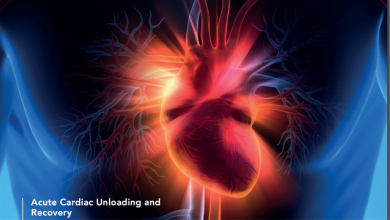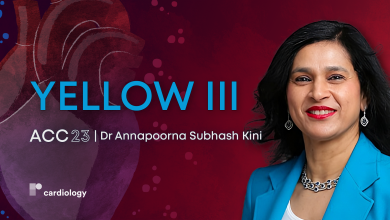Search results
Author(s):
Giuseppe Sangiorgi
,
Fabrizio Clementi
,
Clarissa Cola
Added:
3 years ago
Several independent lines of clinical evidence have shown that critical stenoses cause only a fraction of ACS. Rather, ruptures of a thin fibrous cap covering a large lipid-rich necrotic or superficial intimal erosion frequently trigger acute coronary thromboses at sites of non-critical narrowing of coronary arteries. This shift in thinking has fostered the notion of the so-called 'vulnerable' or…
View more
Author(s):
Min Wu
,
Antonius FW van der Steen
,
Evelyn Regar
,
et al
Added:
3 years ago
Vulnerable atherosclerotic plaque comprises a lipid-rich necrotic core, covered by a thin fibrous cap, that is weakened by macrophage infiltration.1 Plaques that have this morphology and composition have a greater probability of being associated with acute coronary syndromes in clinical studies.2,3 Coronary artery disease is most commonly triggered by the rupture of vulnerable plaque and…
View more
Author(s):
Gilles Rioufol
Added:
3 years ago
Coronary artery adventitia was long considered to be a purely supportive and nutritive tissue, and its role in the natural history of coronaropathy was thus neglected. However, recent studies have highlighted a dynamic role played by the adventitia, and especially by its vasa vasorum (VV), in the genesis of atherosclerosis,1–3 atherothrombotic events4,5 and restenosis following balloon…
View more
Filippo Crea
Author
Author(s):
Salvatore Brugaletta
,
Hector M Garcia-Garcia
,
Patrick W Serruys
Added:
3 years ago
The identification of vulnerable plaques has been a longstanding challenge for interventional cardiologists. Plaque composition is regarded as an important feature for assessment of plaque vulnerability. Histopathologists have in particular shown that the type of plaque most commonly prone to rupture in vivo is the thin-cap fibroatheroma (TCFA), in which the presence of lipid core (also called…
View more
Renu Virmani
Research Area(s) / Expertise:
Job title: President and Medical Director
Author
Author(s):
Andrejs Erglis
,
Sanda Jegere
,
Inga Narbute
Added:
3 years ago
Intravascular ultrasound (IVUS) is the first catheter-based imaging modality that has been widely used in interventional cardiology.1 It creates cross-sectional images of the vessel lumen and the arterial wall and provides valuable diagnostic information to angiography regarding lumen and vessel measurements and plaque morphology. This information helps clinical decision-making in ambiguous…
View more
Author(s):
Valentin Fuster
Added:
6 years ago
Author(s):
Annapoorna Kini
Added:
1 year ago
ACC.23/WCC — Principle investigator of YELLOW III, Dr Annapoorna Subhash Kini(Mount Sinai Hospital, US) joins us to talk about the study that assessed the effect of evolocumab (Repatha) on coronary plaque morphology using intravascular imaging and gene expression analysis of peripheral blood mononuclear cells (PBMC) in 140 patients with stable CAD on maximally tolerated statin therapy …
View more
Author(s):
Thijmen W Hokken
,
Joana M Ribeiro
,
Peter P De Jaegere
,
et al
Added:
3 years ago
Evidence-based medicine is the foundation of contemporary clinical practice and results in better clinical outcomes than experience-based medicine.1 Meta-analyses of homogenous randomised controlled clinical trials are the pinnacle of evidence-based medicine and the backbone of the highest recommendations in clinical guidelines.
These randomised trials pertain only to the selected patients who…
View more















